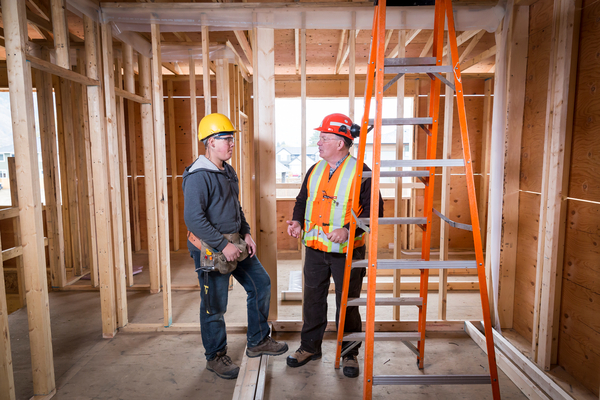Safety officer shares top questions from residential construction workers and employers — and fills us in on a new resource that answers them.

Photo credit: WorkSafeBC (Workers’ Compensation
Board of B.C.), used with permission
“How do I get the information I need?”
That’s one of the top questions Jason Baia, a WorkSafeBC occupational safety officer, gets from residential construction employers and prime contractors during inspections. Sometimes when employers are new — to the industry or to Canada, for example — they need more information on the basics of B.C.’s Occupational Health and Safety Regulation or Workers Compensation Act. Or they may want to better understand manufacturers’ instructions or the CSA Standards.
“Employers may not yet understand some of the regulations that go hand-in-hand with the work they’re doing,” says Jason, who has been inspecting construction sites for the past 12 years.
“We really try to tailor the information to provide for employers’ specific needs — to get it into a paragraph or two that gives them direction,” he says. “No one goes out there wanting a worker to get hurt, and sometimes employers need a better understanding of how to implement some control measures to prevent that from happening.”
Listening to employers on the job

Occupational safety officer Jason Baia
Photo credit: © WorkSafeBC (Workers’ Compensation
Board of B.C.), used with permission
To provide more information on these control measures, WorkSafeBC published Safe Work Practices in Residential Construction in July 2020. This revised resource is based on the experiences of prevention officers and their interactions with residential construction employers.
“Some employers aren’t sure what to expect at first because they’ve never been inspected by WorkSafeBC, but once they understand who we are, they’re eager for information and they want to do things right,” Jason says.
He suggests that employers and prime contractors are most likely to open the new book for answers about:
- Supervisors’ responsibilities – An important aspect of effective supervision is knowing how to talk to your crew. See my post Construction supervisors fine-tune their safety talk skills.
- Hierarchy of controls – After you’ve identified hazards and assessed the risks, you need to start with “eliminating the hazard,” which is at the top of the hierarchy. Below it, in descending order, is substituting the hazard with a safer alternative, using engineering and administrative controls, and using personal protective equipment (PPE). All four types of controls should be considered, and they often work best in combination.
- Safe use of ladders – Jason says employers ask questions about using ladders versus work platforms. Often, work platforms, not ladders, are the right tool for the job. Read more in my post Is a ladder the right tool for the job?
- Excavation safety – Connecting with BC 1 Call to determine the location of underground utilities is an essential part of planning a residential construction project.
Thanks to Jason for telling me about his work.


